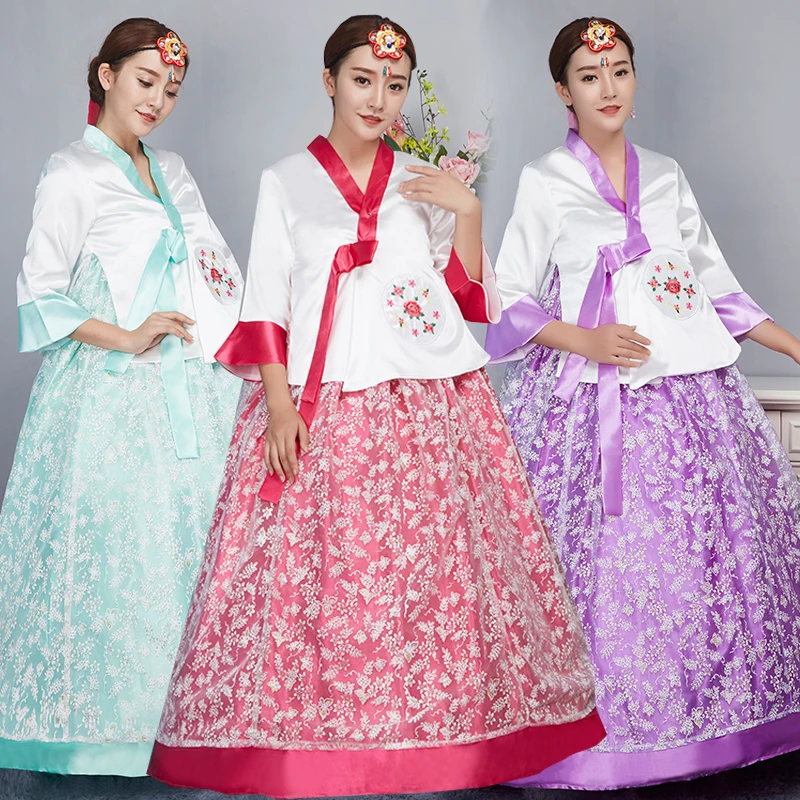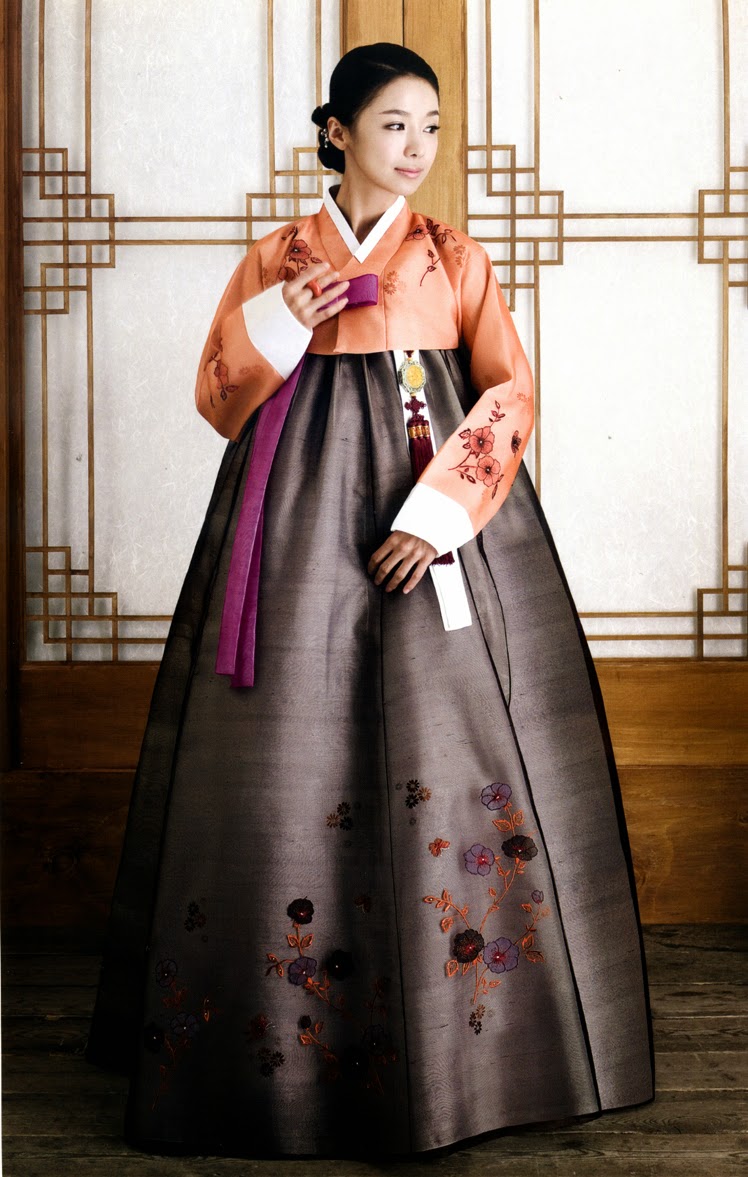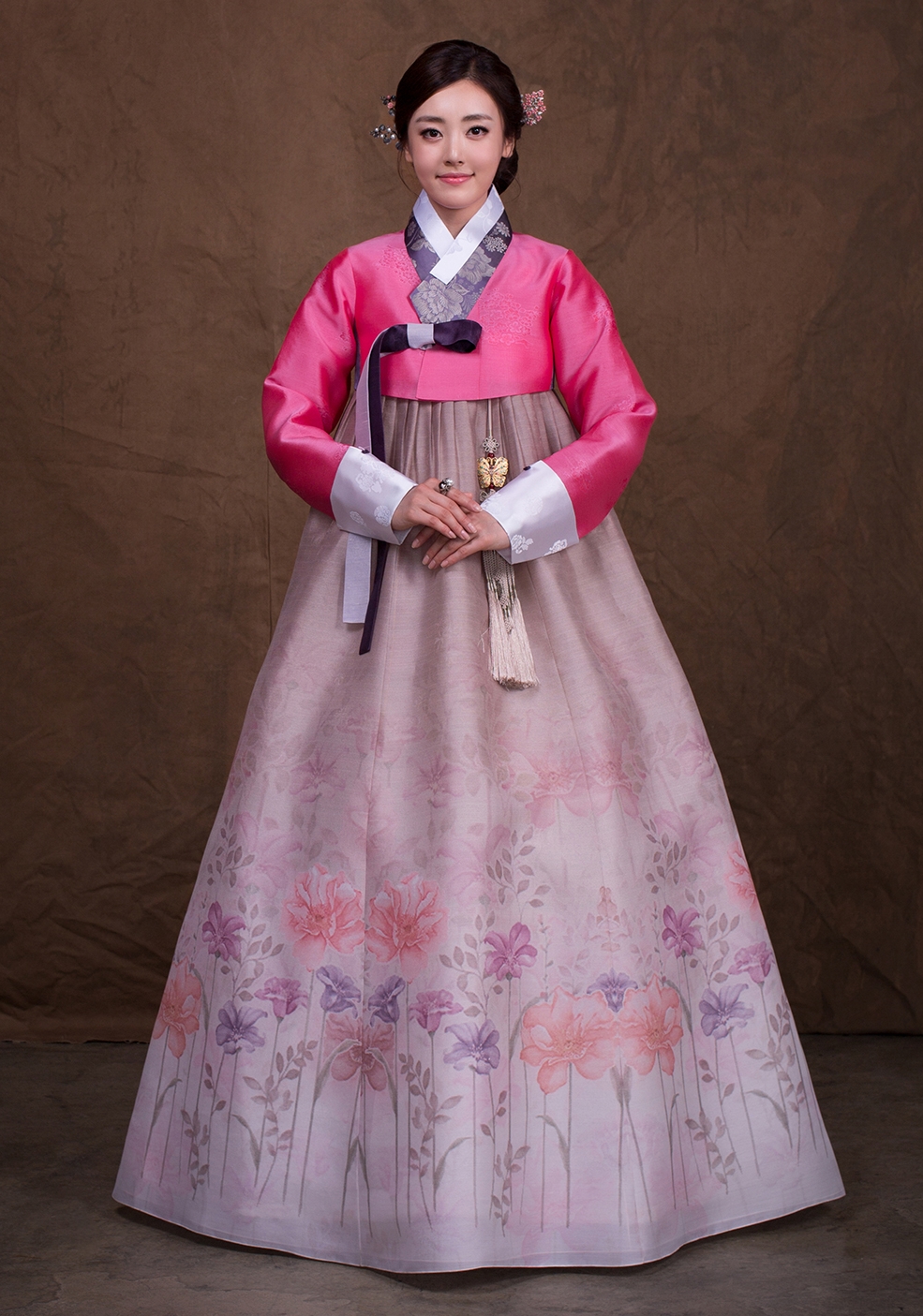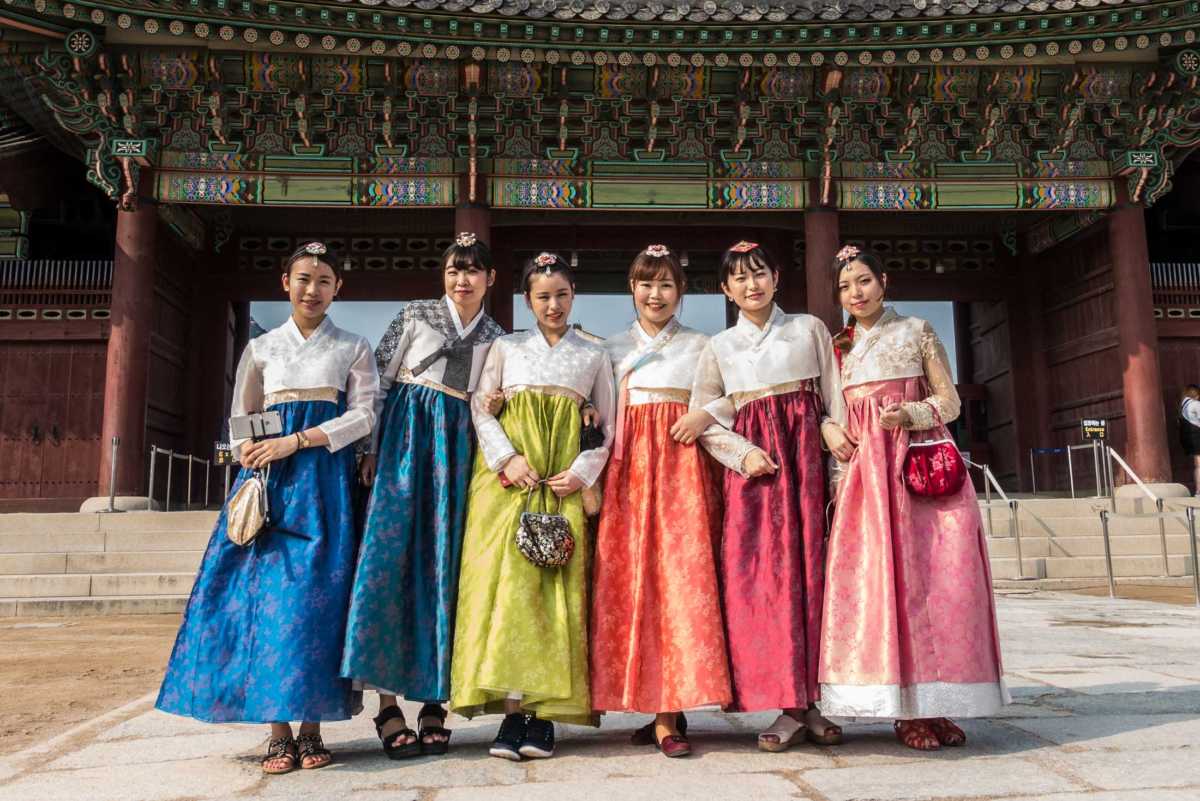
Korean Traditional Dress 2017 New Arrivals Hanbok Korean Embroidery Traditional Dresses Ethnic
2. The most common type of Korean traditional dress is the hanbok. The hanbok is a two-piece garment consisting of a jeogori (top) and chima (skirt) for women, and a jeogori and baji (pants) for men. The jeogori is a short, fitted jacket, and the chima is a long, flowing skirt.

Sequined Korean traditional costume hanbok female Korea palace costume hanbok dress national
Korean traditional clothing, or Hanbok (한복) - is very pleasing to the eyes and also very comfortable to wear. Unlike traditional attire from other cultures, Hanbok has almost not changed its form for over 1500 years. Although Hanbok is a traditional attire it has not lost its importance.

Korean traditional dress 2017 new arrival hanbok korean traditional hanbok korean dress korean
Korean Traditional Clothing. Along with unique and remarkable food, clothing is a huge part of Korean culture. Typically made with plain and patterned silks and other fabrics with intricate designs typically featuring graceful lines and national symbols, Traditional Korean Clothing is unique, and rich Korean history has been woven into them.

4 Color Fashion Korean Traditional Dress Women Hanbok Korean Dress Ancient Clothes Luxury Korean
The use of Korean traditional dress by females as a source of celebration is indicative of gender difference in upholding cultural traditions. Korean women wear traditional dress to show their love for their country and pride in its unique heritage. Korean males wear traditional dress more sparingly in celebration of life events, such as for a.

korean wedding dress traditional (Hanbok) FASHION STYLE
The women's hanbok has a short jacket called 'jeogori' paired with a full skirt that is called 'chima'. The men's hanbok has a short jacket, pants called 'baji', and usually a short coat called 'baeja'. It is the same structure for children's hanbok, with the girls' hanbok being the same as the women's and the boys' hanbok with the men's styles.
my life korean traditional costume photo studio, Hongdae goguan (korea travel,seoul attraction)
Hanbok is the traditional Korean costume. It called Hanbok (한복) in South Korea and Joseon-ot (조선옷) in North Korea. The hanbok we know today refers to the Joseon Dynasty (1392-1910). It is characterized by riot of color and simple lines. Han means ''Korea'' and Bok means ''Clothing''.

Korean Traditional Dress Fashion dresses
A Centuries-Old Korean Style Gets an Update. The hanbok, a traditional form of Korean dress, is being embraced by K-pop stars and adapted by innovative designers. Jennie, right, of the K-pop group.

Traditional Korean Dress, Hanbok Nari Inven Global
The core of traditional Korean dress lies in its graceful shape and vibrant colors. It has a creative and expressive design, with a slim top and full bottom. Composition of women's dress: A woman's basic structure of hanbok includes a jeogori (jacket) secured by a lengthy tie and a vibrant, flowing skirt chima (skirt).

Buy New Arrival Korean Hanbok Vintage Korean Traditional Dress Ladies Women
June 17, 2021 - As a part of our Leo Gala Series to promote Korean culture and celebrate its beauty beyond the façade, Asia Society Korea presents to you Hanbok: Part 1.. In 2020, BlackPink, a K-Pop group, made their long-awaited comeback with the single 'How You Like That.'On top of their magnificent performance, the music video drew the attention of many to the traditional Korean.

한복 Hanbok Korean traditional clothes[dress] ModernHanbok Traditional dresses, Korean
Newest, Latest Styles available on YesStyle. Shop Now for 10% Off your 1st Orders! Upgrade Your Wardrobe with a Wide Selection of Korean Womenswear from Casual to Formal

한복 Hanbok Korean traditional clothes[dress] ModernHanbok Korean Fashion Minimal, Korean
Hanbok is a Korean traditional dress dating back centuries. A high-waisted, long skirt is commonly worn on formal occasions, and it is designed with a long waist. Clothing like this has a long and rich history, and it can be traced back to Joseon's cultural exchange period. The style of clothing worn by the Ming Dynasty influenced hanbok.

Traditional Korean Clothing Hanbok Dress for Women Ancient Palace Robe V neck National
The beoseon is a type of paired socks worn with the hanbok, Korean traditional clothing, and is made for protection, warmth, and style. Gomusin. Gomusin are traditional Korean shoes made of rubber. Presently, they are mostly worn by the elderly and Buddhist monks and nuns.

Korean Culture Fashion Appreciate the Hanbok Korean Culture Fashion Appreciate the Hanbok
Free Shipping Available On Many Items. Buy On eBay. Money Back Guarantee! But Did You Check eBay? Check Out Korean Traditional Dress On eBay.

한복 Hanbok Korean traditional clothes[dress] A bride's hanbok worn at a traditional Korean
Hanbok - traditional Korean dress. Produced as part of Hallyu! The Korean Wave at V&A South Kensington. Simply meaning 'Korean clothes', 'hanbok' was introduced in the late 19th century by Koreans as a term to help differentiate their everyday dress from a recent influx of western-style clothing. A century later, western clothing had.

Traditional Korean Dress, Hanbok Nari Inven Global
What is Hanbok? Hanbok refers to the traditional clothing of the Korean people. Formally, it mainly refers to the costumes of the late Joseon Dynasty, but it refers to the costumes of all countries that existed on the Korean Peninsula, including the modern Republic of Korea or North Korea, from the Three Kingdoms of Korea period.. Hanbok has continuously changed by accepting elements from.

Young Women in Traditional Dress, Gyeongbokgung Palace, Seoul, Korea Travel Past 50
The term hanbok (한복) actually translates directly to 'Korean clothing'. While this is the literal translation, the term hanbok generally refers to a form of traditional Korean clothing that became common during the Joseon Dynasty (1392-1897). Hanbok was usually worn by the more wealthy members of Joseon society such as aristocrats.